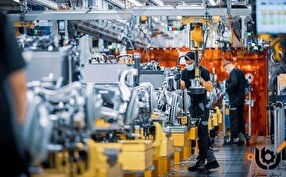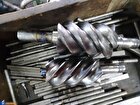Iranian Specialists Manufacture Vehicle Wiring Harness Test Device by Using AI

“A process exists in the production line of car parts manufacturing and design factories which is called car wiring harness test to check if all wires assembled by human or machine are functionally tested,” Amin Keyqobad, the managing director of the knowledge-based firm, told ANA.
“The testing of these strings of wires is usually conducted by human forces, which, in addition to being dangerous for a human's life, is very time-consuming since nearly 6,000 pixelated strings of wires should be opened by a human operator and then checked one by one,” he added.
“This device has been made by using Python artificial intelligence or Python AI, and it tests a string of wires every three milliseconds. A central computer connected to the device is mounted on a wire test table, which shows the wire connection map on the monitor. When the AI detects that a wire is not working properly, a number of red lines will appear on the monitor,” Keyqobad explained.
Earlier, in September, a knowledge-based quality and dimensional control device for O-rings, washers and felt bowls based on machine vision technology was also produced by experts at an Iranian knowledge-based company.
In this device, detection algorithms based on machine vision are used. Machine vision is a set of integrated components for using information extracted from digital images to automatically guide manufacturing operations.
Machine vision has wide applications in various industries, including steel, electronics, automotive and automotive parts, polymer, food, pharmaceutical, medical and health industries, etc.
“In machine vision technology, using cameras and industrial lenses, products are imaged in the production line of factories, and by image processing the parts are separated after dimensional and visual inspections automatically by algorithms and artificial intelligence, intelligent production lines and devices, and quality control work to check and perform automatic analysis of the parts,” said Mehdi Nadi, the managing-director of the knowledge-based company.
“Reading barcodes of products, inspecting the correct assembly of parts and products, inspecting product defects, separating defective from healthy products, 3D dimensioning of products with high accuracy, and reading texts and handwriting on factory products are among the advantages of this product,” he added.
“Also, the correct inspection of parts packaging, accurate counting of parts, correct inspection of the position of printing on products, interception of factory products, and the possibility of reporting on all company productions are other advantages of using machine vision technology,” Nadi said.
4155/v
























